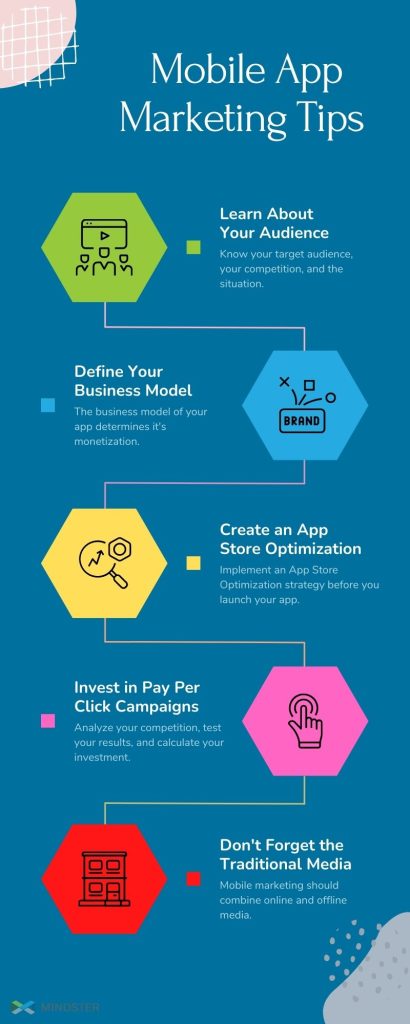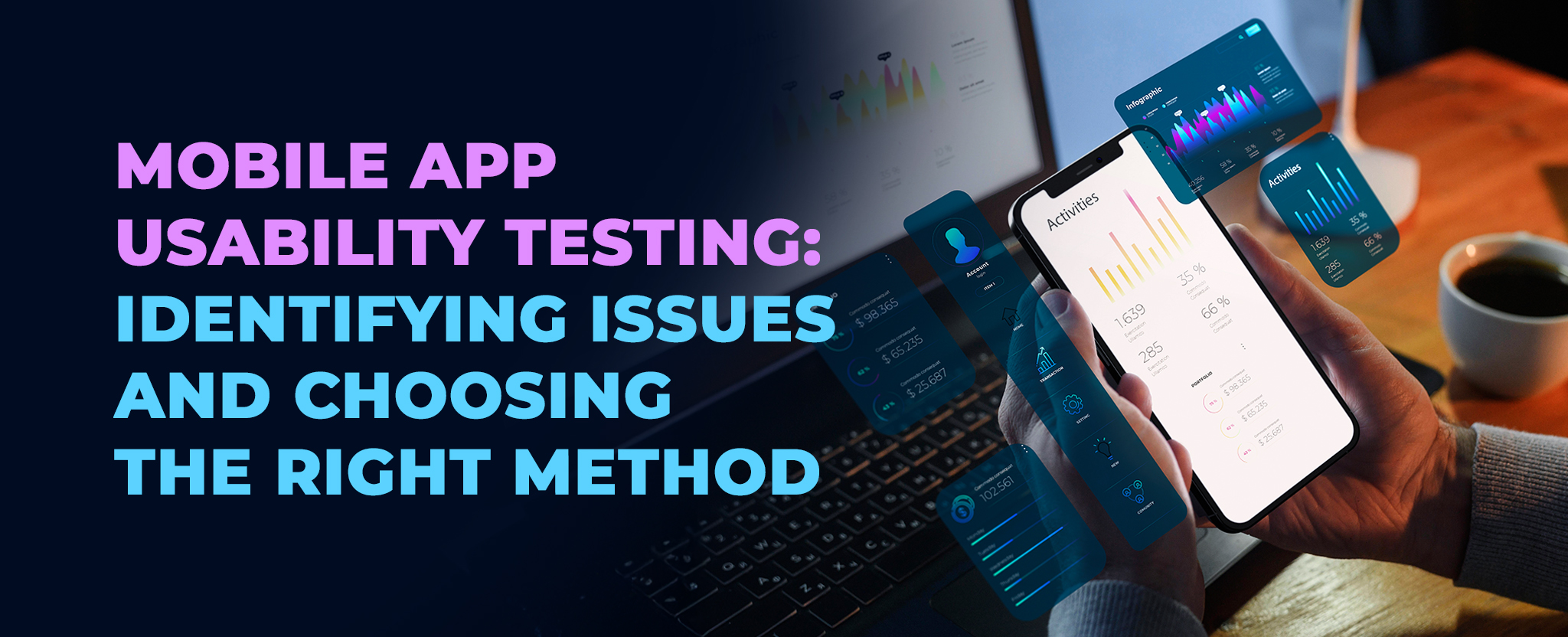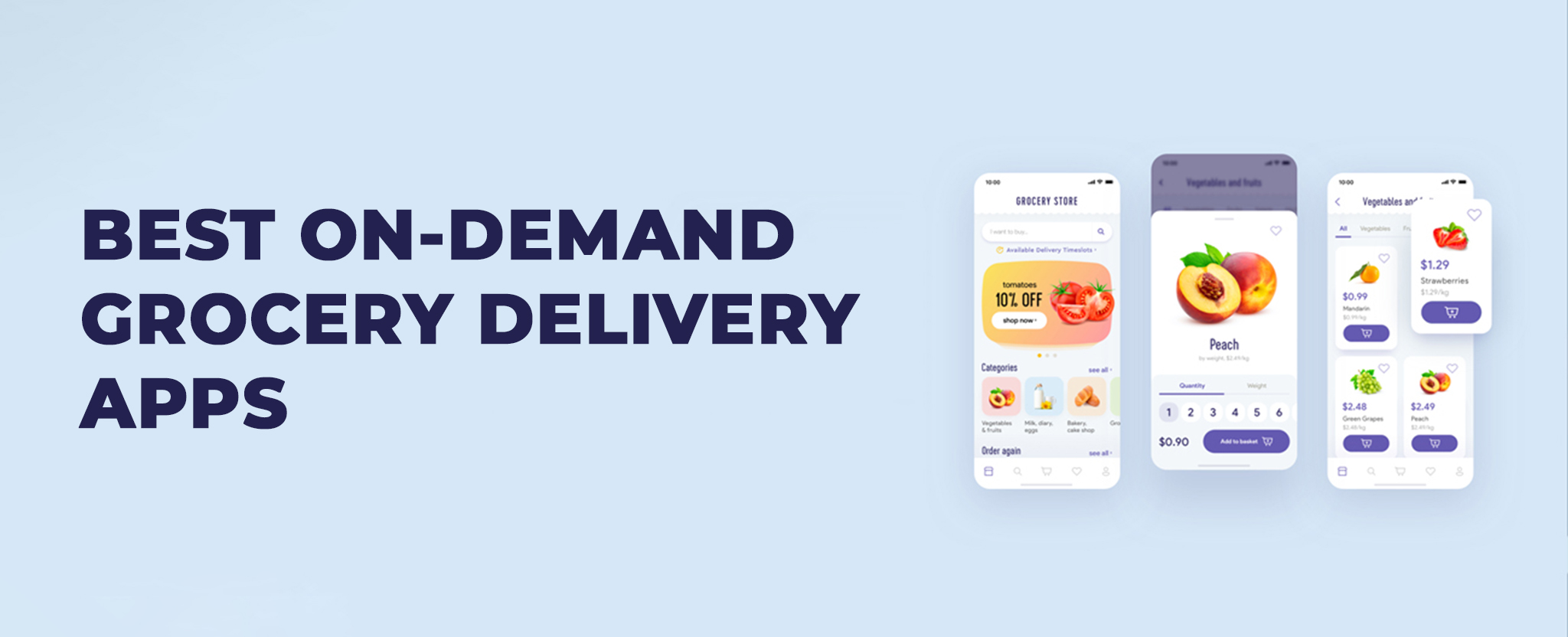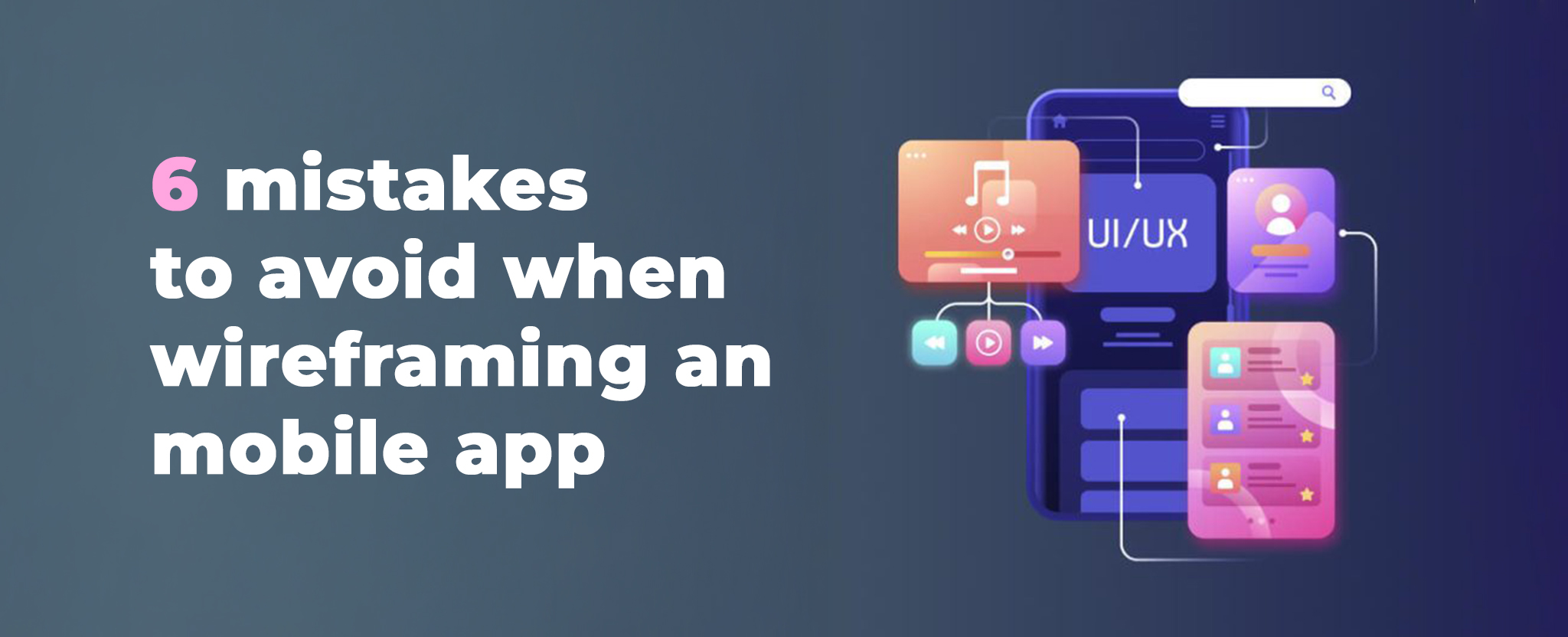Everything You Need To Know About Running A Mobile App-based Business
14 Feb 25 


Mobile app development for business is growing thanks to the increased dependency on mobile applications. It has become a requirement to build a mobile app for my business to provide better services and experiences for users. Furthermore, the industry is going through a transformative phase where the advancement in micro-processing technologies enables you to run the apps on multiple platforms. For example, software like Flutter and React Native allow you to create mobile app for business on android and iOS devices.
This increase in demand and technological advancements fulfilling this demanding show how big an opportunity lies in building mobile app for business. So, if you are hoping to start mobile app development for small business, congratulations, this is the right time for you. However, do know that with great demand comes greater expectations. If you do not truly understand the industry, your market, and your target audience, you will not be able to successfully sell your mobile applications. So in this blog, let us go through some of the most significant things you should know and learn about when you run an app-based business.
Mobile App Development: Introduction
Mobile app development refers to the process of building applications that can be run on devices like smartphones, tablets, laptops, etc. These apps can either be pre-installed on your device or you can download and install them from app stores whenever you need them.
Mobile apps use the network capabilities of the devices to work remotely and therefore, require software that you can install on your device, and backend service to access data through APIs. Additionally, there are many aspects of the app development process like screen sizes, hardware requirements, etc. that you need to consider if you are planning on developing scalable applications.
Types Of Mobile Applications That You Can Create And Their Use Cases
Now that you know what mobile app development is, here are four mobile app development approaches that you may choose from. You can decide on which approach to take based on your business goals and strategies, and targeted audience.
Native Mobile Applications
Native apps are built using tools and SDKs offered by platforms like Apple and Google. They are run natively on the platform that you choose and have the best runtime performance. However, the cost for building separate codes for each platform is high and the features should be implemented differently based on the platform’s SDK tools.
You can choose to build native applications when you want to use native capabilities like GPS, camera, microphone, etc. offered by the platform. This helps in quicker execution of features and thus makes it easier to build a rich user experience. Additionally, implementing push notifications is also much easier in native apps.
Cross-platform Applications
These mobile applications are written in various programming languages and then compiled for each platform separately. It uses a single codebase for multiple platforms thus providing a unified user experience for all platforms. However, it does not have native libraries and depends on third-party open source libraries. Furthermore, the code is not written natively but rather must be compiled and bridged which can cause bugs to occur.
You can decide to build cross-platform applications if you want to align the user experience across all platforms, have a single development team, and do not have the budget and time to build and maintain two separate applications.
Hybrid Mobile Applications
Hybrid apps are built using technologies like JavaScript, CSS, and HTML, and then bundled as mobile apps for each platform. The point that makes it different from cross-platform apps is that it works using web containers and follows browser runtime.
Additionally, the codebase is shared between web and mobile apps, and you can use web development tools to build these apps. However, the performance is not native as they are built using web development technologies, and provide little or no support for native devices.
Progressive Web Applications
PWAs don’t require native or cross-platform development, and also do not use app store installations or other traditional app delivery channels. Rather, they work inside the browser, on both mobile phones and desktops. It runs through a browser on a URL using its network connection and browser capabilities. Therefore, it has little or no support from native devices and loses interactivity when the network connection is not available.
You can build PWAs if your user has uninterrupted access to network connectivity, and can solve issues through the browser without requiring any native capabilities like camera, GPS, etc.
Five Key Features To Make Your App Successful
Now that you are aware of the different types of applications that you can create, here are a few significant features that you must ensure your app has for it to be successful.
An appealing design
An app design consists of two parts- user experience and user interface. UX refers to how it works and UI refers to how it feels. Both of these are equally important. If your app is not structured and easy to use or does not have a good-looking interface, it may not be quite appealing to your audience. Rather, if all the crucial functions are easily accessible and your app has a great visual design, it could provide better services to your users thus, making it successful.
Scalability
The world is constantly changing and so are our users. With the increase in opportunities for mobile apps, there is constant competition. In situations like this, for your app to be successful, you must ensure that they are as flexible and adaptable as possible. And for that very reason. Developers must choose the platform that will enable them to make changes and modifications to the app based on user feedback.
Good marketing
For any app to receive more users, it must be known by more. And therefore, it is highly crucial that you spend time and money on advertising your apps. You could also consider the methods that big players use to promote their apps.
Additional value
Since so many applications are developed and made available to the users, for your app to stand out among them, it must have a unique value-added on top of the basic features. This additional aspect of the app must be well thought out to make it appealing and convincing to the users.
Partners
Another key feature is that your app is highly efficient and bug-free. And these products come from partners rather than providers. Therefore, you must research and find out technologies that your competitors use and know more about the technical assistance that they used.
The Mobile App Development Process
The mobile app development process includes various stages, and through detailed and proper completion of each step, you will be able to build successful mobile applications. There are mainly six stages-
- Build an App Development Strategy
Building an app development strategy requires a complete understanding of what your business and individual goals are and how you are planning to move forward in order to fulfill these goals. For that, you will have to find answers to questions like what are your objectives? How do you plan to solve industry problems through your apps? How much are you willing to invest? Which business model do you wish to follow? And many many more.
Starting a mobile app-based business involves understanding your market and crafting the right business name. Use tools that can help you generate business names tailored to your niche.
Finding answers to these questions will help you draw a clear picture of how you must move forward with your mobile app development process. However, you need to do three things to be able to develop an effective strategy-
- Brainstorm your idea
- Research on the target audience, market, and required tech stack
- Define your minimum viable product (MVP)
- Analyze and Plan your App Development
Once your strategy is clearly defined, you can move on to analyze and plan your app development. By turning the vision you received from the developed strategy into achievable goals, you will be able to build a product roadmap. You can convert the strategies into a step-by-step process which further can be grouped priority-vise.
You can also use the already defined MVP to cut down costs and prepare for the initial launch. Also, you can start stacking up technical requirements and hiring expert developers best suited for your already decided mobile app development approach.
- Build UX/UI Design
UI and UX are the most important aspects of an app when it comes to increasing the user base. It is the part that appeals to the users and therefore, must be done with the utmost understanding of the target audience. UI refers to the interface made available to the users. It should be clean, attractive, and easy to understand. UX, on the other hand, is the way the app functions. It defines how the user interacts with the application. Therefore, it must be simple, and interactive, with no complicated elements.
The UI/UX designing process includes- building user flow, creating wireframes, choosing design patterns/palettes/elements, creating mockups and animated prototypes, and providing final touch-ups according to received user feedback. It is an important process and you should hire expert designers to do the same.
- Begin App Development
Once all the planning out is completed, you can start developing your app. There are three main aspects for app development-
- Technical architecture
- Technology stack
- Development milestones
And mobile app development projects have three integral parts- backend, application programming interface (API), and frontend. What the users see is called the front end and the server’s side where development occurs is called the backend.
Mobile backends are used to store, secure and process data. It mainly focuses on storing information in a remote database, scripting to add logic to the interactivity, and creating architecture that makes it quick and easy to sort through the information.
APIs can either be built by your company, or you can buy them from an existing API provider. Purchasing a ready-made API and integrating them into your app is the easiest and fastest method as it allows you to save time and cost of development. However, building your own API gives you more freedom to choose which features to include or exclude according to your needs.
Developing a mobile frontend or the face of your application requires multiple technologies. Some apps may require both backend and APIs, while others may work with just a platform that offers a local database.
- Testing the Developed App
After the development process is completed, it is essential that you conduct quality assurance as it determines the reliability, stability, and usability of the developed application. Testing can be broadly classified as manual testing and automated testing, which are done based on app type and its requirement.
However, all the apps must go through a set of testing methods in order to be perfected. Some of them include-
- Functional testing
Ensures that all the features and functionalities are working well.
- Performance testing
Ensures that the app serves its purpose and provides consistent performance.
- UI/UX testing
Ensures that the UI/UX is working well according to the needs and specifications of the users.
- Documentation testing
Make sure that there are no mismatches between the initially created document and the developed application.
- Security testing
Checks for any risk to sensitive data, threats from hackers, data leakage, etc.
- Configuration testing
Checks whether the app is compatible and configurable with all the platforms it is designed for.
- Platform testing
Tests platform and device compatibility for different operating systems and client-side browsers.
- Recovery testing
Checks the ability of the app to recover from any failure or error.
- Beta testing
This refers to making the app available to real users. It tests the application as a whole to receive feedback from users.
- Certification testing
Ensures that the application meets the standards of various play stores and app stores.
- Deployment and Maintenance
Once you have built and tested the mobile application, it is time to deploy it, and maintain it for further improvements and updations.
Top Business Models For Mobile App Development
Here are some of the top business models for your mobile applications.
- Freemium
Everyone likes to get things for free. This is why through this business model, you can receive a massive user base because it is free for the user. It allows you to reach your potential audience quickly. Additionally, you can also provide updates, purchases, or subscriptions within the app as a way to increase revenue. These additional features can provide enhanced experiences to your users. However, do note that very few of the users move up the ladder.
- Advertisements
Digital advertisements are highly popular these days and can be easily integrated into your applications. Several platforms like Google Ads allow developers to run ads in their app interfaces and earn money out of them. This is a great revenue model where the developers are not demanding any money from their users while still earning decent revenue.
- Sponsorships
This type of business model provides scope for collaboration between large app development companies and startups. In order to attract more customers, startup companies adopt various marketing techniques and sponsorship is one of them. In this model, they pay a certain amount to collaborate with apps to initiate or integrate their campaign in the app. However, the app must have a large user base or great reach in a specific niche for this sponsorship to benefit the startups.
- Affiliate Marketing
Affiliate marketing is a simple business model used by many e-commerce apps like Amazon and Flipkart. In this model, if a sale is made through an affiliate member’s link on the e-commerce website, the member receives a commission. It is an effective model that allows developers to earn decent revenue without disturbing the user’s experience with ads or compelling them to pay. Nowadays, this model is being used in many other types of apps other than e-commerce.
- E-commerce applications
Selling on the internet is quite popular nowadays. And this opens up a wide opportunity to develop business models around the same. You can either choose to sell your applications or allow others to list your products on their platform.
Significant App Dependencies That You Should Be Aware Of
Dependencies refer to external components required for applications, websites, and IoTs. any aspect that an app must rely on to meet its objectives can be considered as a dependency. In the case of mobile apps, there are basically two types of dependencies- hardware and third-party.
Hardware dependencies
Hardware dependencies are those devices that run or communicate with mobile apps. When defining these dependencies, you must make sure that their capabilities and features align with the requirements of the app. For example, mobile apps developed for Android must engage within the android mobile ecosystem. They all come in various shapes, screen sizes, and performance levels and therefore, certain devices may be critical hardware dependencies for some applications while they may not be relevant for others. Similar is the case with iOS applications. Therefore, strategic compromises must be made to decide on the hardware devices that best fit each application.
In the case of IoTs, hardware dependencies refer to smartphones that run the app and other pieces of hardware like BLE interfaces that the app communicates with. Unlike traditional forms of hardware controls, hardware dependencies allow mobile app industries to eliminate friction between the hardware and software and enhance product value by providing added capabilities, mobility, and efficiency.
Third-party dependencies
One of the most common third-party dependencies is application program interfaces or APIs, which are sets of tools, functions, and protocols that allow apps to communicate with one another, share data and take actions on behalf of the other. This allows applications to collaborate and provide shared services without developers having to develop extra codes. It also enables app developers to expand the functionality, user-friendliness, and speed to market of their apps.
However, do understand that these dependencies can threaten app performance and security depending on how they are coded into the apps. Therefore, it is extremely vital that you assign experts to do the job if you do not want to risk your entire mobile application.
Top Digital Marketing Techniques To Market Your App
No matter how good your applications are, if you do not market them properly, you will not be able to sell your applications or gain more clients. Here are some of the top digital marketing techniques to sell applications or attract more leads.
Understand your audience
You will be able to provide services and products that your target audience needs only when you understand their requirements. And for that, you must properly study them. There are various practices like market surveys, customer feedback, etc. that can help you gain useful information about your audience.
Once you have gained enough insight, you analyze them and define your target audience, how you can provide the best services relevant to them, and how it will benefit them. You can also choose the path that you should take to achieve your goals based on the insights that you received from this group of people.
Create an online presence
Having an online presence will allow you to be more exposed to your target audience. You can provide vital information about your company to build brand value, brand awareness, and visibility to your customers. Some of the best ways by which you can create an online presence are by creating a website, being active on social media, building relationships with people already there in the industry, building and growing an email list, etc.
SEO strategies
Developing search engine optimization strategies to stay on top of the list is essential, especially with the number of people searching the web for service requirements. Some of the strategies that you can take to optimize your website would be keyword research and optimization, URL optimization, internal linking structure, improving user experience, etc.
In addition, you can optimize the technical side of your app by making it mobile-friendly, increasing its loading speed, minimizing HTTP requests and server response time, etc. Another SEO optimization technique is called off-page optimization, by which you can increase the credibility and reliability of your app/ website through backlinks from high-ranked websites.
App store optimization and marketing
Having great visibility and ranking in app stores like Google Play Store and App Store are extremely important for your app to reach more users. Therefore, it is essential that you take up strategies to optimize and market your apps in the app stores. Some of the methods you can use to do the same are- a clear and unique app title, usage of relevant and trending keywords, a great app description, an eye-catching app icon, visual presentations of the app, etc.
Lead generation and management
Mobile app development companies need to generate more leads for their business and the best ways to do it is by using content marketing. You can use lead-generating content like case studies, guest blogs, and webinars, to attract more readers. Or you could share your content over third-party sites that have a large audience enabling you to gain more exposure. Another method is by distributing your content on multiple social networking sites. All of these methods allow you to gain more exposure and ultimately generate more leads.

Three Actionable Sales Techniques To Sell Your Mobile Apps
With the top marketing techniques laid out, next comes the methods you can use to sell your applications. Here are the top three actionable sales techniques that you could implement in your app development business.
- Relationship building via LinkedIn
LinkedIn is a great platform for promoting your applications. Though there is less traffic on the platform, the users present are more likely to listen to your offerings compared to those on other social marketing channels. LinkedIn provides you with far better opportunities to generate more leads.
However, do remember that your goal on LinkedIn must always be lead-centric and therefore should recognize the ideal connections. And once you have found them, always try to engage with them and try to convert them into customers.
- Create unique copies for each marketing medium
Social channels are one of the best selling points for most businesses. However, there are various points that can affect a promotion’s success. For social channels, you will have to first understand the frequency at which you must post, how to measure ROI efforts, and what copy to post for each platform.
Content is the core element that drives social media and other marketing channels. And therefore, you must take efforts to create distinct contents to post on each social channel and use a variety of headlines to push your feed. The same strategy can also be applied to your emails, videos, presentations, etc.
- Use a CRM to know your buyers
A customer relationship management tool allows you to get all your customer-related data in a single database, thus enabling you to know more about your buyers and do better business with them.
A good CRM also allows you to automate daily tasks, which is essential to keep sales satisfaction. It also enables you to create dashboards to easily retrieve reports and effective resources about your clients. You can use these insights to better your services and make your customers happy. Thus increasing trust and loyalty.
Six Characteristics Of A Good Mobile App Development Company
To end it all well, here are some characteristics for your business to be successful.
Good market and platform experience
Before you start any business, it is extremely vital that you do good research and have great knowledge about your customers and target market. Furthermore, it is also important that the developers or company that you hire to develop your applications have significant experience and understanding of what the target customers need.
If your team of developers can connect well with the audience, it is highly likely that they will be able to build successful and meaningful applications. Additionally, your developers must also have expertise in the platforms that they work with. If they are well-versed in both iOS and Android, and various software like React Native and Flutter mobile app development, you can have great flexibility in developing your applications.
Clear-cut development process
Every company must have a clear-cut development process and should stick to it. By strictly following it, the team adheres to strategies built around the project, allowing the complete team to have an idea of what to do, how to do it, etc. The process directs the entire towards the goal thus ensuring that it is rightly met.
Diverse skills and well-defined roles
Experience is not everything. You must have a great team with diverse skills to develop innovative and exceptional applications. You must be able to build a team with good developers, innovative designers, reliable project managers, skilled app testers, etc. The more diverse the team skills are, the better for your projects and your company as a whole. Furthermore, you must ensure that the team has great energy together and team spirit with well-defined roles for each of them to bring the best out of them.
High coding standards
Coding is an essential skill in every mobile app development project. Even if you were to take up low code or no code app development approaches, it is essential that your developers have great knowledge of coding. In fact, if the team is familiar with and confident in using different programming languages, they will be able to provide more for the projects. It enables you to have more flexibility, experience, and skills on hand.
Clear and open communication channels
For any project to be completed successfully, there must be great communication between the teams involved. Therefore, it is vital that you have various types of communication channels like chat, video conferencing, SMS etc to ensure that timely communication is possible between all the teams involved in a project.
Passion and dedication toward the project
In order to gain trust and loyalty from your clients, you must be able to show your passion and dedication to the projects that you take up. By taking all the necessary steps to clearly understand the needs of your clients and properly communicating them with your team to ensure that the project is directed rightly, you will be able to provide the best results for your clients. In other words, the best mobile app development company would not only work hard for profit and success but also because they highly value their clients.
Wrapping Up
The mobile app development industry has much potential and opportunities due to the increased developments and updates in technology. People are extremely reliant on mobile apps to finish their daily tasks and are likely to move to applications that will provide them with more features and services. Anyone hoping to start an app-based business with an innovative head would be a great asset to fulfill this ever-growing demand for mobile apps.
However, with starting any business comes great risks, and being prepared beforehand can help you to eliminate many of them. This blog was a complete guide for those hoping to start or are already running an app-based business, and as a flutter app development company, Mindster also aims to succeed and be on the top. If you have any queries contact us .
- Android Development3
- Artificial Intelligence24
- Classified App1
- Custom App Development2
- Digital Transformation10
- Doctor Appointment Booking App11
- Dropshipping1
- Ecommerce Apps38
- Education Apps2
- Fintech-Apps34
- Fitness App2
- Flutter3
- Flutter Apps19
- Food Delivery App5
- Grocery App Development1
- Grocery Apps3
- Health Care6
- IoT2
- Loyalty Programs8
- Microsoft1
- Mobile App Maintenance1
- Mobile Apps119
- Product Engineering3
- Progressive Web Apps1
- Saas Application2
- Shopify6
- Software Development1
- Taxi Booking Apps7
- Truck Booking App5
- UI UX Design8
- Uncategorized4
- Web App Development1


















Comments